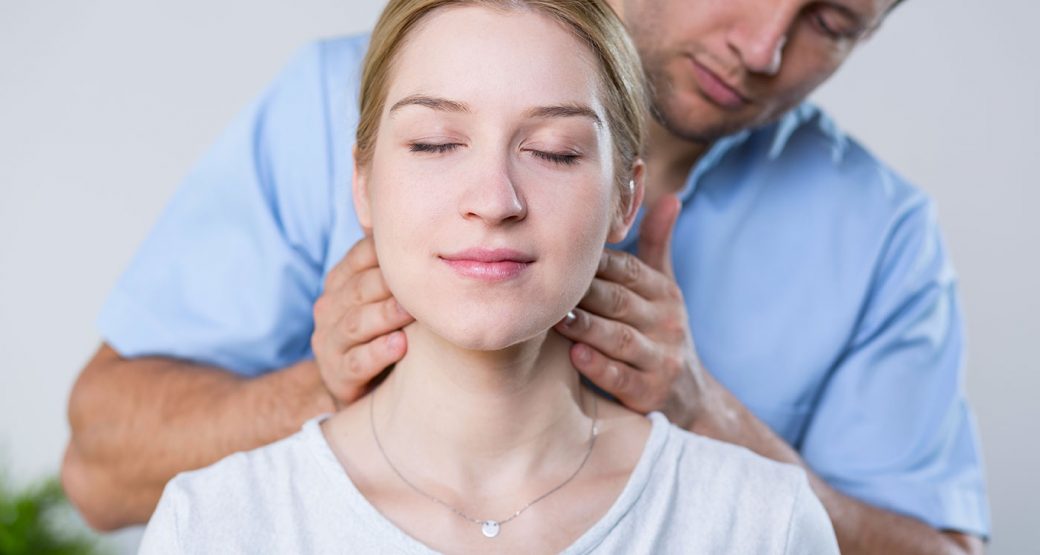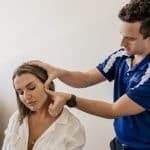Benefits of physiotherapy in the treatment of temporomandibular disorders

Article by Graceville Physiotherapist Joni Levine
Temporomandibular joint (TMJ) disorders is a collective term for any conditions that affect the jaw and its’ associated muscles, ligaments and nerve supply.
Common conditions and symptoms seen in clinic include bruxism (clenching), osteoarthritis, pain with yawning, pain with chewing food, hypermobility, and post-trauma injuries (e.g. contusion, MVA). TMJ disorders affect up to 70% of the population to some extent, with the most common demographic being females between the ages of 20 & 40 (1).
In clinic, we often see patients with TMJ disorders with other symptoms such as neck pain, dizziness and headaches. This is mainly due to the common nerve innervation of the jaw and the upper cervical region from C0-C3, with these regions supplied by the trigeminocervical nucleus. This also supplies the head region, which explains the reason why patients with neck pain can also experience headaches and dizziness. Due to the role of the trigeminocervical nucleus, we will often assess and treat (as indicated) the upper cervical region to assist with pain relief associated with TMJ disorders.
Physiotherapy is an effective non-invasive treatment option for patients with TMJ disorders (2-4). Patients are often surprised to find out that physiotherapists can treat TMJ disorders, but the temporomandibular region consists of joints, muscles, ligaments, tendons and nerves like any other body region. We therefore approach treatment to this region like we would with any other body region – reduce pain, increase mobility, increase strength, increase function and reduce recurrence. Some techniques require internal access to the temporomandibular region, which patients often remark is similar to when they visit a dentist.
We like to work with dentists as part of a multidisciplinary management approach to optimise patient outcomes (5). We will liaise with dentists if we are unsure of any dental reasons for their pain (e.g infection). Night splints can be effective to help reduce tooth erosion with bruxism (6) and we will often ask patients with bruxism if they have a night splint.
Related Tag: TMJ Treatment Brisbane
References:
1. Sharma S, Gupta DS, Pal US, Jurel SK. Etiological factors of temporomandibular joint disorders. Natl J Maxillofac Surg 2011;2(2):116–19. 2. Aggarwal A, Keluskar V. Physiotherapy as an adjuvant therapy for treatment of TMJ disorders. Gen Dent. 2012 Mar-Apr;60(2):e119-22. 3. Martins WR, Blasczyk JC, Aparecida Furlan de Oliveira M, Lagôa Gonçalves KF, Bonini-Rocha AC, Dugailly PM, de Oliveira RJ. Efficacy of musculoskeletal manual approach in the treatment of temporomandibular joint disorder: A systematic review with meta-analysis. Man Ther. 2016 Feb;21:10-7. 4. Brantingham JW, Cassa TK, Bonnefin D, Pribicevic M, Robb A, Pollard H, Tong V, Korporaal C. Manipulative and multimodal therapy for upper extremity and temporomandibular disorders: a systematic review. J Manipulative Physiol Ther. 2013 Mar-Apr;36(3):143-201. 5. de Toledo EG Jr, Silva DP, de Toledo JA, Salgado IO. The interrelationship between dentistry and physiotherapy in the treatment of temporomandibular disorders. J Contemp Dent Pract. 2012 Sep 1;13(5):579-83. 6. Zhang C, Wu JY, Deng DL, He BY, Tao Y, Niu YM, Deng MH. Efficacy of splint therapy for the management of temporomandibular disorders: a meta-analysis. Oncotarget. 2016 Dec 20;7(51):84043-84053


